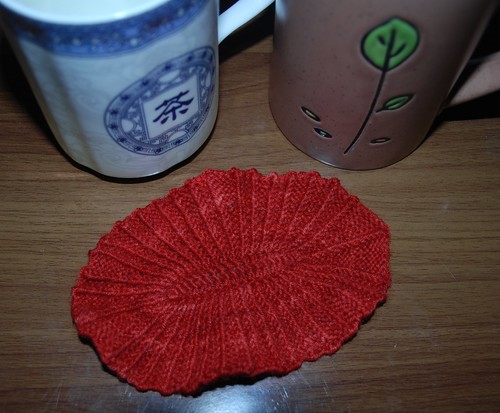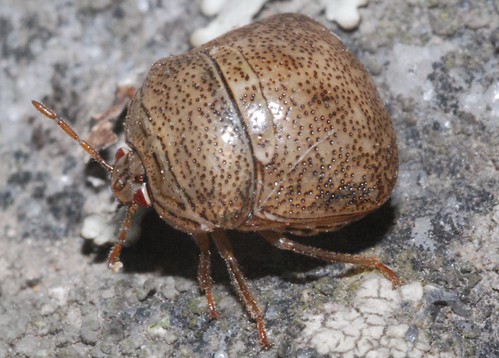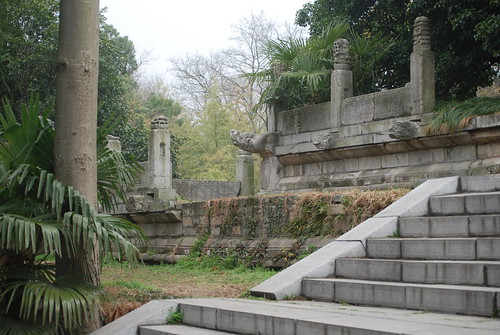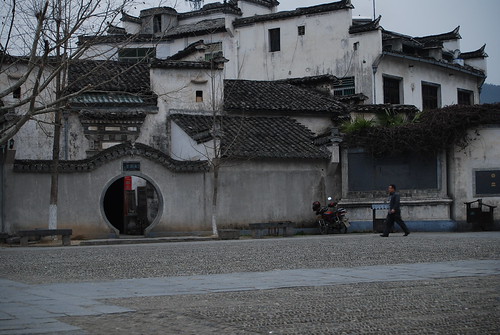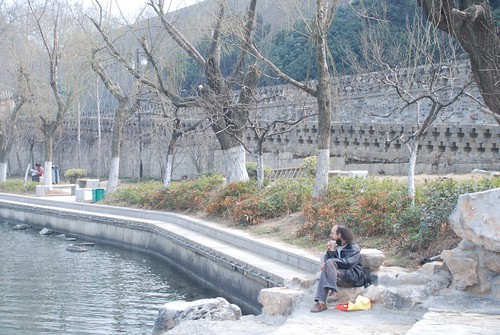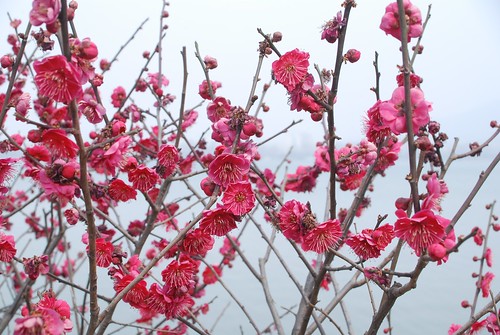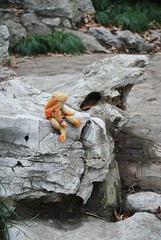I decided that something to put my tea mug on in the office was necessary, and of course wanted something fossily. Much though I like graptolites, they aren't the right shape for this - too much branching, not enough solidity. I didn't even consider doing a dinosaur. I decided to do something that was approximately 2-dimensional anyway, so chose my favourite Ediacaran. Meet Dickinsonia.
Yes, it really did look like this*. Flat, oval, with a central line and radiating rib-like structures. Bizarre, isn't it? Would you believe that this was a lichen? No, neither do I, but it has been suggested in the scientific literature. Other ideas for what it was include an annelid worm (i.e. an earthworm relative), a coral-like animal, or something completely extinct and not even an animal. The latest, and probably the best (i.e. most likely to be correct) idea is that Dickinsonia was a placozoan**. Living placozoans are so obscure that they don't have a common name, and they merited approximately 10 minutes of lecture in my undergraduate zoology course***. Living placozoans are like Dickinsonia in being flat and moving by creeping across a surface. However, living placozoans are much smaller than Dickinsonia - millimetre rather than centimetre size - and have an irregular outline and no consistent structure. Dickinsonia specimens always have roughly the same shape and form. However, if placozoans used to be much bigger, and the living ones we see have become small and simplified during evolution, this isn't an insurmountable problem.
The facts about Dickinsonia that we are sure of: it was alive and it lived approximately 550 million years ago. It lived together with a number of other living things, also of uncertain affinities. Collectively they're known as Ediacaran fossils, after the Ediacara hills of Australia, where they were first discovered. They've since been found all over the world, including Namibia, Siberia and Canada.
Apologies to those of you who were expecting a post about knitting!
* Wikipedia article with more pictures here: http://en.wikipedia.org/wiki/Dickinsonia
** Here is a link to the scientific paper, by Erik Sperling and Jakob Vinther: http://onlinelibrary.wiley.com/doi/10.1111/j.1525-142X.2010.00404.x/full
***A webpage about living placozoans here: http://www.ucmp.berkeley.edu/phyla/placozoa/placozoa.html and the wikipedia page here: http://en.wikipedia.org/wiki/Placozoa
Monday, 28 March 2011
Dickinsonia
Sunday, 27 March 2011
A different sort of shieldbug
For those of you who appreciate the shieldbugs (that'll be everyone, then?), here's a really cute one. As the weather is definitely getting on the warm side, and the sun was shining happily, we went for a long walk around and up the mountain again, with the express purpose of looking for bugs. And doing lots of knitting, in a certain person's case - this has the advantage that it distracts Toad enough that he doesn't eat all the bugs before i can photograph them.
Either it's too early still, though, or the knitting didn't do its job properly - I didn't find all that much at all. A few new leafhoppers (including a huge one that got away), and a few signs of spring in the grasshoppers and beetles, but overall, surprisingly little. The best one we found near the top of the mountain, on top of some large crags. Amongst all the peaty soil and leaf litter, there were dozens of little round shieldbugs. The first one I was sure was playing dead, before realising that few species go as far in their camouflage attempts as to actually lose their heads over it... and it turned out that most of them really were dead. I only found this one live one, lumbering around on my trousers (an entomologist's clothing normally hosts a remarkably diverse community). I'm trying to work out the ID, but it's a scutellerid shieldbug of some sort. On most shieldbugs there's a little triangular bit on their back, called the scutellum. In scutellerids, it's much bigger... and in this case constitutes the whole of its back, to the point it doesn't really look like a bug at all!
We saw various other things as well... a wonderful little flock of jay-like birds, copying each other with a whole assortment of whistles, complex tunes and other calls. Crowds of people setting up camp wherever they could, and playing cards on tablecloths cast over the road. Ice-creams (now they were *really* interesting - or at least chocolatey, which comes to the same). And a really cute jumping spider that posed for a portrait - see my Flickr site if you're brave enough!
Thursday, 24 March 2011
Ming tombs, Nanjing
Last weekend we went to the Ming tombs in Nanjing, which are a World Heritage Site. Parts of the site are about 600 years old, but most of the buildings are modern recreations in the old style. The tomb complex covers a huge area, including an avenue with animal statues, and is very pleasant to walk in, especially at this time of year, when the weather is pleasantly warm rather than too hot.
The area in the photo is the base of one of the buildings - most of the structure is old, but someof the statues and steps have been replaced. This is something we're finding about China - even things that look old are often newly built.
More photos on Joe's and my photostream!
Monday, 14 March 2011
Xidi
Well, we've finally got out of Nanjing! A day's fieldwork down in neighbouring Anhui Province involved an overnight train there and back, a few hours looking at rocks and collecting fossils, and a tourist trip to the nearby town of Xidi.
Xidi is a small town in rural Anhui, not far from the amazing Huangshan mountain area (as seen in "Crouching Tiger Hidden Dragon"). The hills surrounding it are not on that scale, but still steep forested mountains with crags and aesthetic-looking pines...
The town is famous for having produced a high number of "number one scholars" - the best in their year in the whole country - and has been a thriving business community for a long time. Some of the houses are over a thousand years old, and wandering among the alleyways and into the buildings is a strange experience. It is now a World Heritage Site due to the remarkable preservation of the old buildings, and this includes all the traditional elements you could want to see... stone troughs with goldfish in, hidden bonsai gardens amongst dripping walls, astounding carved wooden screens inside dimly lit houses, open rooves with the martins nesting on the walls... it's a real taste of the Old China, which is so rarely preserved elsewhere.
There will be quite a few photos from here going up on Flickr, for those who want to explore this forgotten world a bit further...
http://www.flickr.com/photos/77849983@N00/
Tuesday, 8 March 2011
Lunch at Xuan Wu Lake
Now that the warmer weather is here, we often go to Xuan Wu Lake to eat lunch. The lake is a short walk from the institute, and we have to go right past the Buddhist temple that sells vegetarian dumplings.
The lake is a popular spot for people to spend their lunch hour, or go to on their day off. The gardens are well tended, the benches are abundant and the traffic is the other side of the city wall.
Spring has definitely arrived - the weather is warm, the blossom is out, and insects are starting to appear. Expect more photos shortly!
Blossom at Xuanwu Lake
I said that blossom was out, and here's some to prove it. Not sure whether this is plum or cherry.
Tuesday, 1 March 2011
Yes, it's an orange toad
Anyway, eventually we persuaded him. Packing him in Lucy's knitting bag did the trick (think kittens with string, but... well, boingier). He's the sort of toad that is easily distracted by taking an eminently sensible pleasure (have to be careful, he's probably reading this) in the simple things in life. It's rather Taoist, really. Which could explain why he was feeling so at home in one of these rock gardens that seem to be everywhere.
I'm amazed that there can be any water-worn limestone left in the wilds in China... there are poems from the Tang Dynasty (around the 8th century) describing how the writer got the lackeys to haul huge rocks into his study for contemplation. Today, parks new and old invariably have little corners (or huge rockeries) constructed from these fantastically-shaped boulders. Walls are built to mimic them, and a single stone is the centrepiece of the lobby of many a major business or hotel...
Why stones, you might ask? Well, I just don't really know. It's been a part of the culture for so long that it's probably something that people don't really think about any more - they're obviously beautiful objects, and that's all there is to it. There are hints about the mysterious attraction in some captions for stones on Xuanwu Lake; they point out that you can see fantastic figures and beasts in the shapes of them - peacocks, dragons, and so on (yes, I'm sure there are toads too, Toad, but they were probably hiding, like you like to do!). It's like our cloud games... "That cloud looks like Ireland," Kate Bush sang in our office today. It's wonderfully childlike in some ways, but in others it's what classical Chinese thought is all about - sitting somewhere beautiful and tranquil, and letting impressions and ideas and half-remembered lines of poetry pop up in your head, and mix together to create something new. It's not the "blue sky thinking" of the West, but something rooted more firmly in the history and the landscape.
Toad says there are only two things that could make this little rock garden better. Firstly, it should all be bright orange, because obviously being orange is such a very good thing to be. Secondly, it needs a lot more insects, slugs and spiders to go chasing after. I have to agree on the latter, but I'm sure it won't be long...

